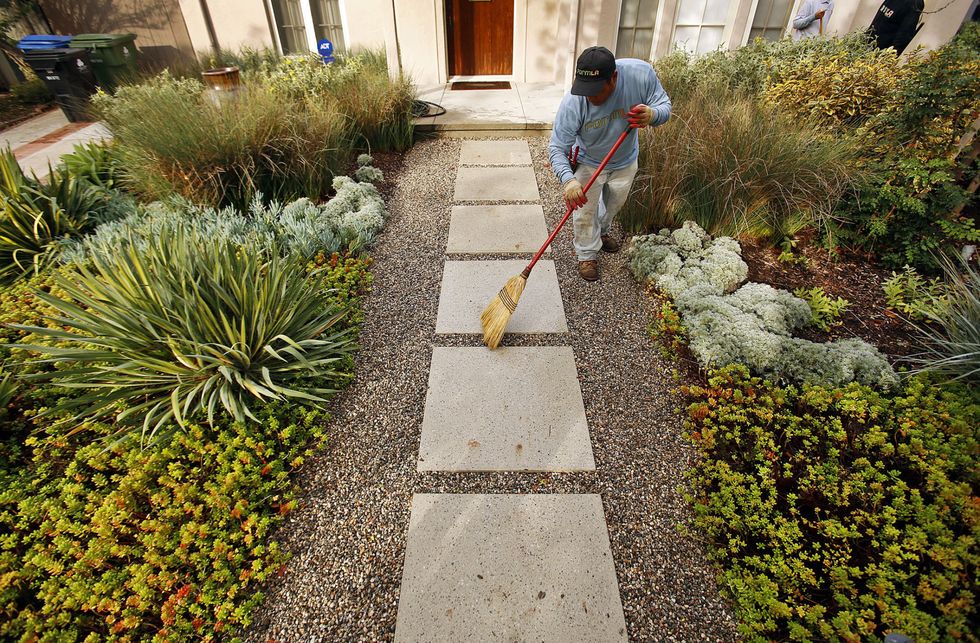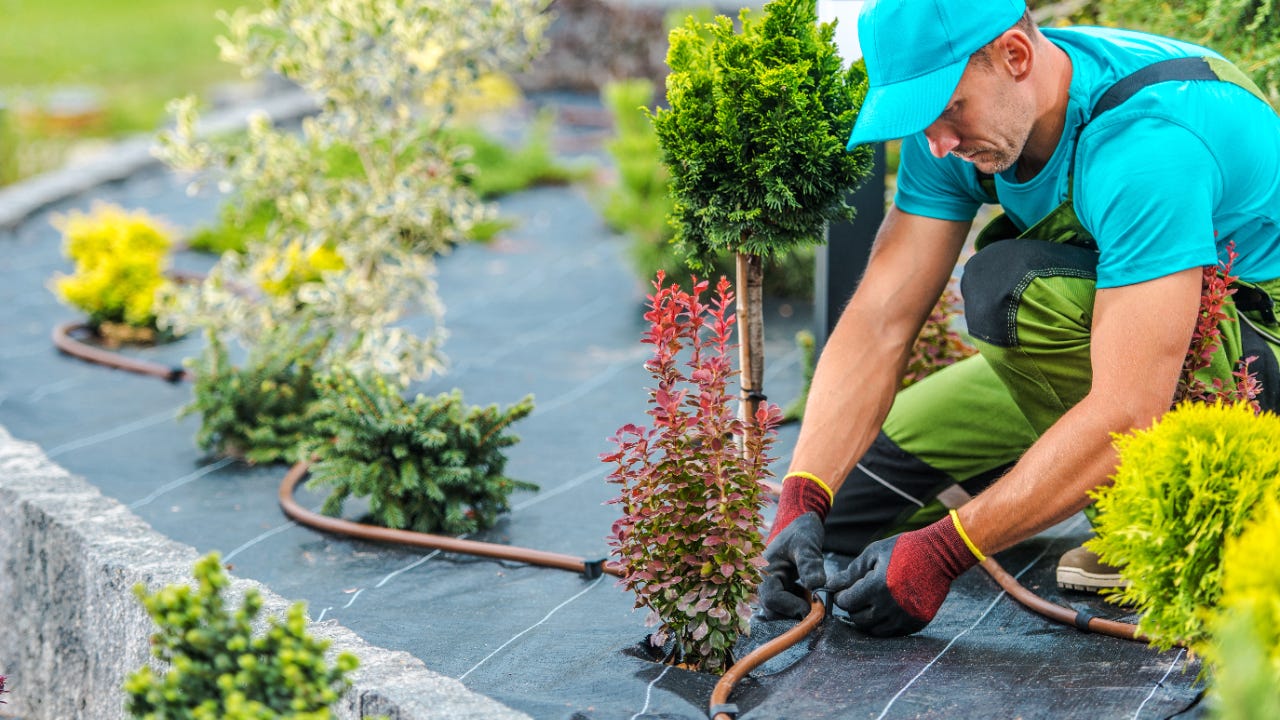Leading Tips for Enhancing Your Garden with Palm Desert Landscaping Concepts
Leading Tips for Enhancing Your Garden with Palm Desert Landscaping Concepts
Blog Article
A Comprehensive Overview to Designing and Implementing Effective Landscaping Solutions
The art and scientific research of landscape design prolong beyond plain looks; they entail a thoughtful combination of layout principles, environmental stewardship, and functional implementation. What techniques can one use to make certain these landscapes not only prosper however also flourish in harmony with their environments?

Recognizing Landscape Layout Principles
One could wonder what foundational components contribute to reliable landscape design. At its core, successful landscape style rests on a number of key concepts that direct the arrangement and choice of components within a space. These concepts include unity, percentage, balance, and rhythm, each offering to develop an unified outside setting.
Unity describes the cohesive relationship among numerous parts, making certain that they interact aesthetically and functionally. Balance can be achieved through asymmetrical or symmetrical arrangements, enabling the landscape to really feel secure and inviting. Proportion entails recognizing the scale of aspects in connection with each other and the surrounding environment, promoting aesthetic harmony and comfort.

Examining Your Outdoor Space
Before carrying out the principles of landscape style, a detailed assessment of your outdoor space is vital. This preliminary examination assists specify the scope of your landscape design job and makes sure that your layout aligns with the distinct attributes of your building. Begin by examining the measurements of your room, taking specific dimensions to comprehend the offered location for different aspects such as gardens, patios, and pathways.
Following, observe the existing attributes of your landscape, including topography, dirt top quality, and drainage patterns. These aspects considerably affect plant choice and positioning. Additionally, assess the sunshine exposure across different areas throughout the day, as this will certainly affect the kinds of plants that thrive in your yard.
Consider the microclimates produced by structures, trees, and various other obstacles, as they can affect temperature level and moisture levels. Take note of any kind of existing plants or hardscape aspects that you want to remove or retain. This comprehensive examination prepares for a educated and efficient landscaping service, making sure that your layout is not only visually pleasing however also practical and sustainable for years ahead.
Sustainable Landscape Design Strategies
Incorporating sustainable landscape design techniques is vital for creating an environmentally liable outside space. These methods not only promote environmental balance yet additionally improve the visual and useful worth of a landscape. One fundamental technique is the usage of indigenous plants, which require less water and upkeep while sustaining neighborhood wild animals. Implementing efficient irrigation systems, such as drip irrigation, decreases water waste and guarantees that plants obtain adequate dampness.

One more effective strategy is the critical placement of hedges and trees to supply natural windbreaks and color, hence decreasing power prices (Palm Desert Landscaping). Rain yards can be integrated into the landscape layout to handle stormwater drainage properly, filtering pollutants prior to they go into waterways
Selecting the Right Plants
Picking the right plants for your landscape is vital to attaining both aesthetic allure and eco-friendly harmony. The process begins with an understanding of your neighborhood climate, soil conditions, and the details microenvironments within your landscape. Analyzing factors such as sunlight exposure, dampness degrees, and existing vegetations will aid you select plants that grow in your one-of-a-kind setting.
Think about including native plants, as they are well-adapted to local problems, require much less upkeep, and assistance local wild animals. Furthermore, choosing a varied selection of species can improve biodiversity while decreasing the risk of condition and parasite outbreaks. It is vital to assess the development behaviors, flowering durations, and seasonal shades of prospective plants to produce a natural and vibrant landscape.
Moreover, think of the meant use of the space; for instance, if the location will experience high foot web traffic, select resilient ground covers. By thoughtfully selecting plants that line up with both your aesthetic goals and environmental demands, you can produce a lasting landscape that not official site just boosts your home however also contributes favorably to the surrounding environment.

Implementation and Upkeep Strategies
Once the appropriate plants have been picked for your landscape, the focus shifts to efficient implementation and continuous maintenance techniques. Effective installment starts with appropriate site prep work, that includes soil screening to figure out nutrient degrees and pH, followed by changing the dirt as needed. Carefully set up plants according to their growth practices and light requirements, making sure sufficient spacing to advertise healthy and balanced growth.
Irrigation is a vital component of implementation. Establish a watering schedule that takes into consideration the details demands of each plant types, adjusting for seasonal changes. Utilizing drip watering systems can boost water effectiveness and lower overflow.
Maintenance approaches have to be executed to make sure the long life and vigor of your landscape. Routine tasks consist of weeding, mulching, and pruning to regulate development and stop condition. Fertilizing needs to be conducted based upon dirt tests, supplying the essential nutrients without over-fertilizing.
Checking for conditions and insects is important; early discovery can avoid significant damages. Lastly, seasonal modifications to upkeep regimens, such as winterizing perennials and preparing for spring development, will certainly guarantee that your landscape stays visually attractive and healthy year-round.
Verdict
Effective implementation and recurring maintenance additionally guarantee the long life and vitality of landscapes. By integrating these elements, landscapes can be changed into lovely, functional atmospheres that promote biodiversity and add favorably find out this here to area well-being.
One could wonder what fundamental elements add to reliable landscape design. At its core, successful landscape design pivots on several crucial principles that assist the arrangement and selection of components within an area.Picking the right plants for your landscape is important to attaining both aesthetic appeal and eco-friendly harmony. It check out this site is essential to evaluate the development routines, flowering durations, and seasonal colors of prospective plants to produce a vibrant and natural landscape.
Once the ideal plants have actually been picked for your landscape, the focus shifts to effective implementation and continuous maintenance methods.
Report this page